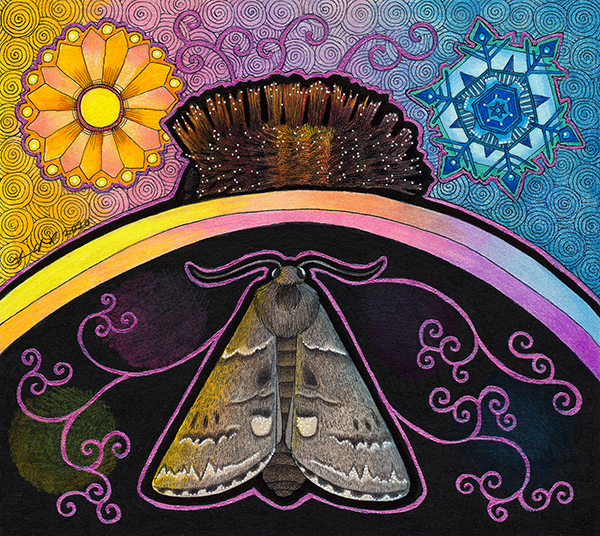Arctic Woolly Bear Moth – Slow Down or Stop
Keywords:
Slow down or stop completely. Freeze and thaw cycles. Consider pausing your project to gain resources in the meantime. Do not act prematurely. Hardiness. Invisible strength. Ice magic. Wind magic. Willow magic. There is strength in stopping. Dormancy. Basking in the sun. Sun friendship. Understanding your personal relationship to the seasons. A unique path. You don’t get things done like everyone else does, and that’s okay. The journey is everything. Your environment isn’t giving you enough, adapt and slow down. Make yourself a safe place.
Description:
The Arctic woolly bear moth (Gynaephora groenlandica) is found in the High Arctic, on Greenland, in the Canadian archipelago and on Wrangel Island in Russia. They are relatively plain appearance, both as caterpillars and moths. Females rarely fly, but males are capable of flight and do so often. Its main predators are bats, other carnivores and some parasites. The Arctic woolly bear moth has a defensive system against bat sonar, completely reversing their paths upon encountering it.
They are most well-known for spending extremely long periods in the larval/caterpillar stage, sometimes up to seven years, and unlike some other insects, spends nearly all its life in the caterpillar stage. This is because it simply cannot get the food it requires in the High Arctic, and so must enter diapause and freeze completely for much of the year, before thawing to take advantage of the short, warmer months to primarily eat Arctic willow. They can withstand temperates as low as -70C. It’s thought that wind direction greatly influences their sites of hibernation/diapause.
Arctic woolly bear moths use the power of the sun through basking to aid in digestion, speed their metabolism, assist in consuming oxygen, and keeping their temperature regulated. In winter when they go into diapause, they generally make a hibernaculum for themselves, a kind of protective cocoon, and make antifreeze type enzymes that will allow them to survive freezing. During this time, their mitochondria degrades, and their metabolism stops. In the coldest regions, they will spin this cocoon every year for seven years, until they have finally gained enough resources to metamorphose into a moth, which they only enjoy for three to four weeks.
Was this helpful?
0 / 0